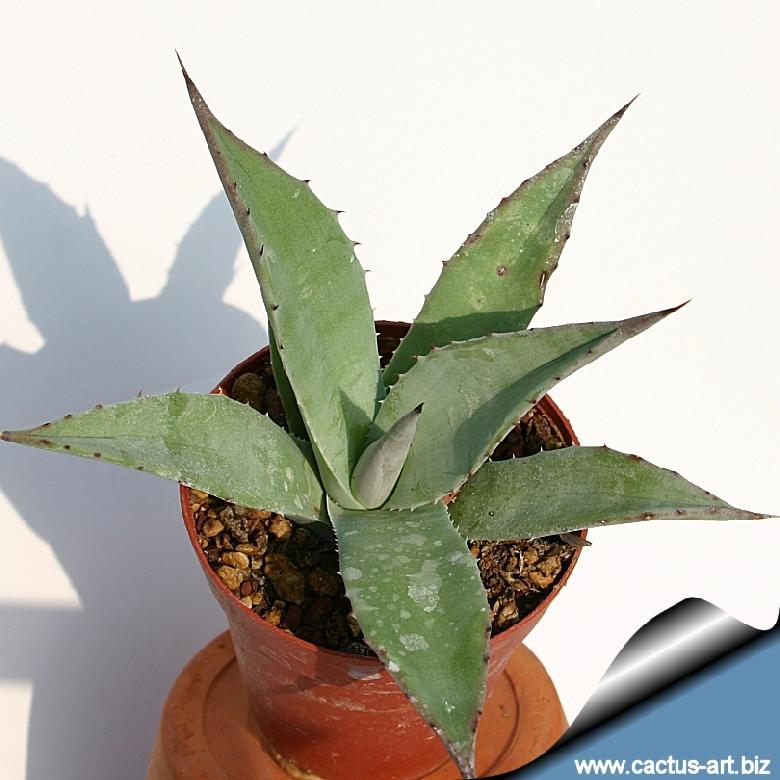
Agave shawii ( Coastal Century Plant )
Origin and Habitat: Southern California, Baja California (Mexico)
Synonyms:
See all synonyms of Agave shawii
back
Accepted name in llifle Database:Agave shawii Engelm.Trans. Acad. Sci. St. Louis iii. (1875) 314. t. 2-4.Synonymy: 3
Accepted name in llifle Database:Agave shawii subs. goldmaniana (Trel.) GentryOccas. Pap. Calif. Acad. Sci. no. 130: 93. 1978Synonymy: 2
back
Common Names include:
ENGLISH: Coastal Century Plant, Coastal Agave
SPANISH (Español): Maguey primavera
Description: Succulents rosettes up to 1.5 m in diameter and 90 cm tall.
Flowers: Blooms only when the plant is 12-15 years old or more.The plant then dies leaving suckers that grow into replacement plants.
Subspecies, varieties, forms and cultivars of plants belonging to the Agave shawii group
Cultivation and Propagation: It is a stunning specimen plant for containers or a well drained spot in the garden. It tend to be slow grower, but worth the effort. Grow it in porous soil with adequate drainage. Itdo well in full sun or a lightly shaded area. Water thoroughly when soil is dry to the touch. In winter watering this plant can be done once every 1-2 months, there is no need to mist the leaves. It is theoretically hardy to -3° C, particularly when dry but it is best to avoid severe freezing temperatures. Heat Tolerance: good.
Propagation:: Relatively easy to propagate by seeds or by suckers (if available) Remove the basal suckers in spring or summer and let the cuttings dry for a few days before inserting in compost.. only problem is the logistics of getting to the suckers - very sharp spines and suckers usually right up against, or underneath the mother plant.
Uses: These striking plants are wonderful when used for accent or simply to provide some all year round foliage colour and often used in a pot as a patio plant, they make an eye-catching statement and along with other evergreen plants in pots, can be moved around to change the scenery or position to give more shelter.










